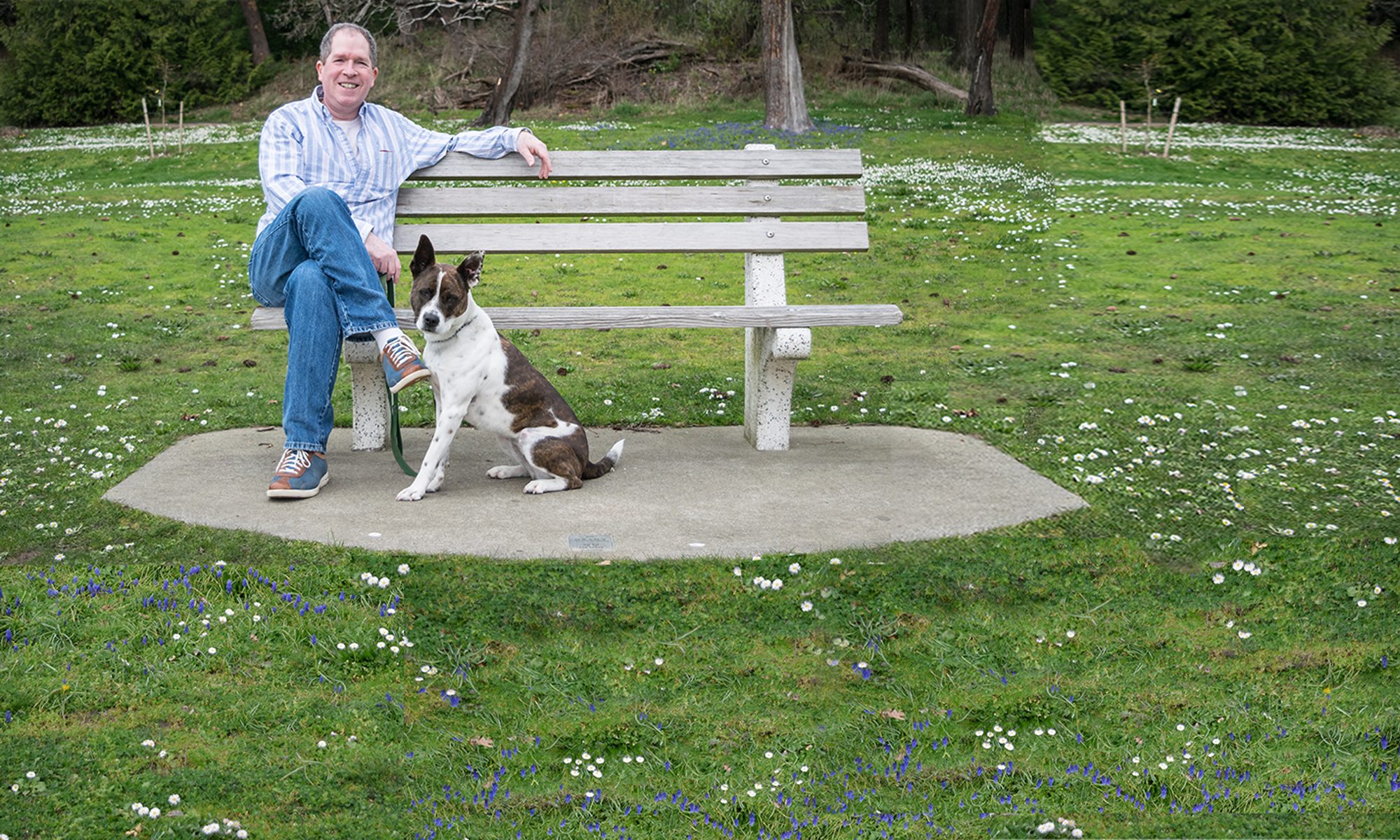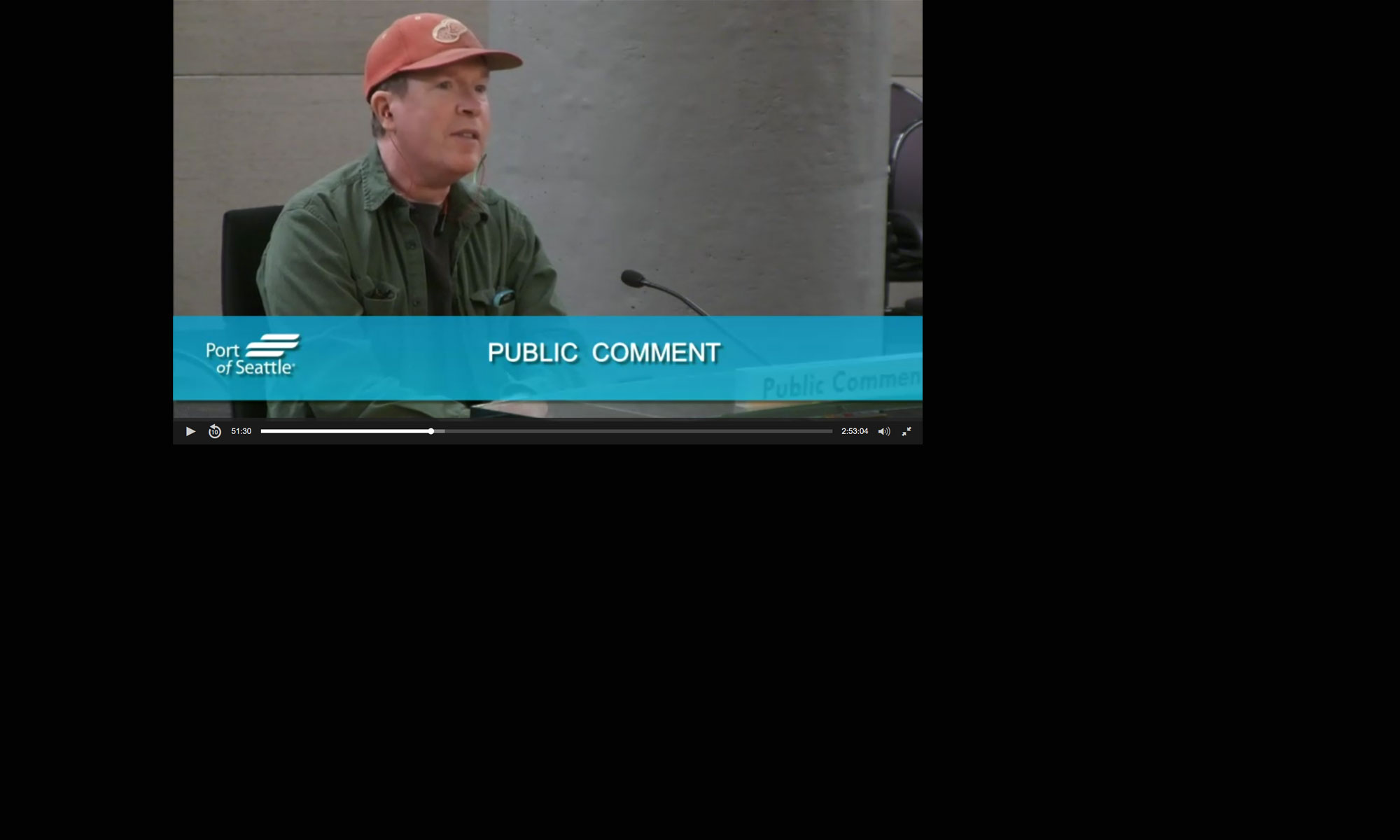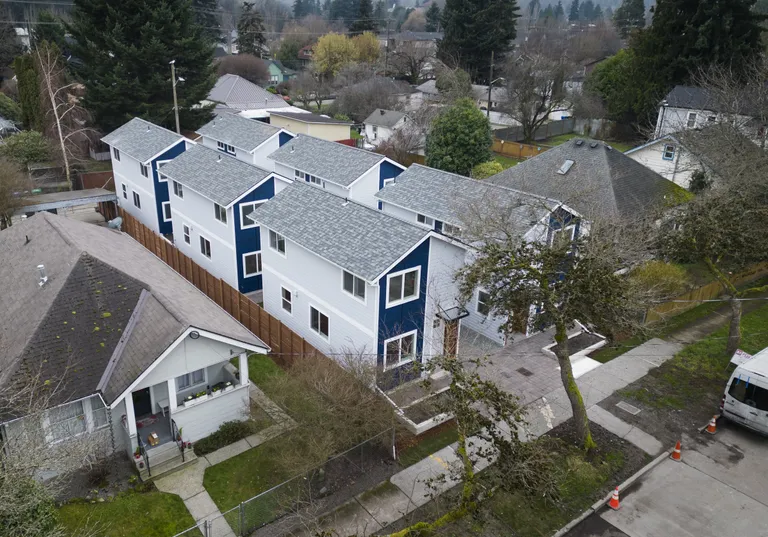You don’t need a crystal ball to see the future of Seattle residential neighborhoods envisioned by Mayor Bruce Harrell. Just go to South Park.
In 2019, this diverse South Seattle enclave was upzoned to accommodate more housing. The result was called “Residential Small Lot,” and it models what is now being proposed in the current One Seattle Comprehensive Plan for homes throughout the city.
Some important context: State law mandates at least four units on all residential lots — six if the property is near transit, which includes much if not most of Seattle.
The changes for properties currently zoned as Neighborhood Residential include increasing maximum lot coverage to 50% from the current maximum of 35% for a typical 5,000-square-foot lot.
Under the comp plan proposal now before the council, the city intends to mandate 20% of the lot as open space, but that could include walkways with no soil, let alone trees.
Planners propose shrinking setbacks (required space between the edge of a building and the property line) from 20 feet in front and 25 feet in back to 10 feet in front and 10 feet in back — or zero distance if there is an alley.
In sum: more concrete, less green.
For a preview, check out South Park, where developers are building up to six separate, small houses on a single lot.
In planning documents, some developers list their projects as multiple single family homes with detached units — what one might think of as a backyard cottage or a home over a garage. But in reality, the units all look about the same — sort of a tiny home village selling for about $500,000 each.
And nary a shade tree in sight.
Experts say you’ll see a lot more of the housing South Park is currently experiencing throughout Seattle under the comp plan proposal.
“I think that is going to be the model for 2025,” said architect David Moehring. “What I’m told by Realtors — and I’m sure it’s the case in South Park — is that they can simply sell these units at a better price because it gives the appearance of a single family home, even though there’s six of them on a lot.”
With this type of residential zoning on the table for all of Seattle, I asked some folks in South Park: “What do you think about the changes so far?”
But first, some data.
A 2021 city study determined that Seattle was losing tree canopy, and that it was worse in what are labeled “Environmental Justice” areas, including South Park. “Neighborhoods impacted by racial and economic injustice not only started with less canopy but also lost more than the citywide average,” stated the report.
King County released a heat mapping study that same year revealing that South Park had some of the hottest summer temperatures of the city: “The data show that surface-level temperatures in areas with paved landscapes, less tree canopy, and industrial activity are substantially higher during summer heat events compared to less urbanized areas.”
Residential Small Lot zoning hasn’t been good for trees, and the numbers show it probably hasn’t done much for families either.
In the 2017-2018 school year — just before the new zoning in South Park went into effect — 381 children were enrolled in the neighborhood school, Concord International Elementary. This year, there are 268 kids, according to the district.
There are lots of reasons why a particular school may experience an enrollment decline. But longtime residents say the new houses in the neighborhood are too expensive and locals are being forced out.
Under the city’s current Mandatory Housing Affordability program, developers in certain areas must include units with lower rents or pay into a fund. In South Park, there are many examples of developers paying instead of including space for tenants with low incomes.
For example, a developer for a project along South Donovan Street paid $17,310 to the Seattle Office of Housing for the right to build in the South Park Residential Urban Village, according to city records.
“There’s some streets that you just go on and our Latinx, Latina, Hispanic communities have definitely left. And it started with the increase in rents,” said Paulina López, executive director of the Duwamish River Community Coalition. “We have an increase of what we call displacement of our neighborhood.”
Added Robin Schwartz, head of development and community advocacy for the coalition: “We absolutely need density, and it needs to be affordable, but we also need better public transportation so people don’t have to have a car. And there needs to be thoughtful designs. Yes, everybody wants their own front door and their own garage but it doesn’t serve the community if the entire lot is paved and all the trees are taken down.”
There is pushback to the current comp proposal.
In a Dec. 20 letter to planners, the Urban Forestry Commission reviewed the proposed development standards. “Increasing lot coverage will increase pressure to remove trees and add impervious surfaces,” it determined.
Rep. Gerry Pollet, D-Seattle, also weighed in.
The plan doesn’t do enough to reduce displacement of lower income households from zoning increases, he wrote in a Dec. 20 letter as part of public comment on the comp plan. It also fails to adequately accommodate trees and housing.
“The City should not adopt decreased setbacks. The reduction of open space has impacts on the ability to keep mature trees and will prevent replacement trees of any significant size to grow on these residential lots to meet our future tree, runoff and health goals,” wrote Pollet.
Both Pollet and the Urban Forestry Commission want the city to incentivize “stacked flats” — residential buildings where the units are stacked vertically on top of each other. The result would be more space for trees and cheaper homes.
“You not only can do both, you should do both,” said Pollet about density and environmental protection. “There are tools to do both and we’re not using those tools. (With stacked flats) you get a lot more density and you get to save a lot of communal open space and trees.”
In fiery City Hall remarks at a Jan. 6 meeting, Councilmember Cathy Moore took on what she considered weakness in the comp plan regarding affordability and trees.
“I’m going to be looking at this with the eye of — does this in fact produce affordable housing? What I’ve seen so far is that it does not. And simply equating density with affordability is a lie. It’s a myth,” Moore said from the dais.
“The other thing that’s critically important that I’ll be looking at this plan is trees. Again, people diminish trees as a NIMBY issue. They are not a NIMBY issue. They are an ecological necessity and I think unfortunately the building industry has been able to capture the dialogue on affordability and trees, and they’ve been very successful in pitting trees against affordability and they’re not either-or. They can very much coexist, and that’s our goal is to coexist in this city.”
Back at South Park, López recalled an exercise she conducted with a local youth group that was asked to visualize how members would like to see the neighborhood. The kids drew pictures of new housing units similar to what was going up around South Park.
“We were like, ‘Dang, I guess they want to see that,’” said López. But when the kids talked more about their dreams for the neighborhood, they wanted a pool, more green space, more trees and newer, nicer housing.
“They said, ‘Why do we have to live in dirty, full of cockroaches, low investment apartments?’ So my point is, the city should have invested first in putting up better legislation and policies to make people healthier before they’re just allowing construction for people who can afford it, rather than taking care of those who have suffered the most from their injustices.”
South Park has a tough history. Decades of intrusion by industry transformed the former Italian- and Japanese-owned farms into a patchwork of homes and manufacturing. Because of truck pollution and other factors, life expectancy here is 13 years shorter compared to wealthier Seattle neighborhoods.
The council hopes to adopt a new comp plan by late June. There is a public hearing scheduled for Feb. 5.
Even while the City Council considers new zoning around the city, it can also create stronger anti-displacement and tree protection ordinances.
The question becomes: When City Hall considers how to accommodate all the projected new residents, does it prioritize housing for them over the concerns about affordability from the people who already live here? Does it put developer profit before environmental justice and livability?
The Seattle City Council has much on its plate. It can either rise to meet this challenge with balanced land use ordinances, or create a metropolis remade by greed, the future be damned.





